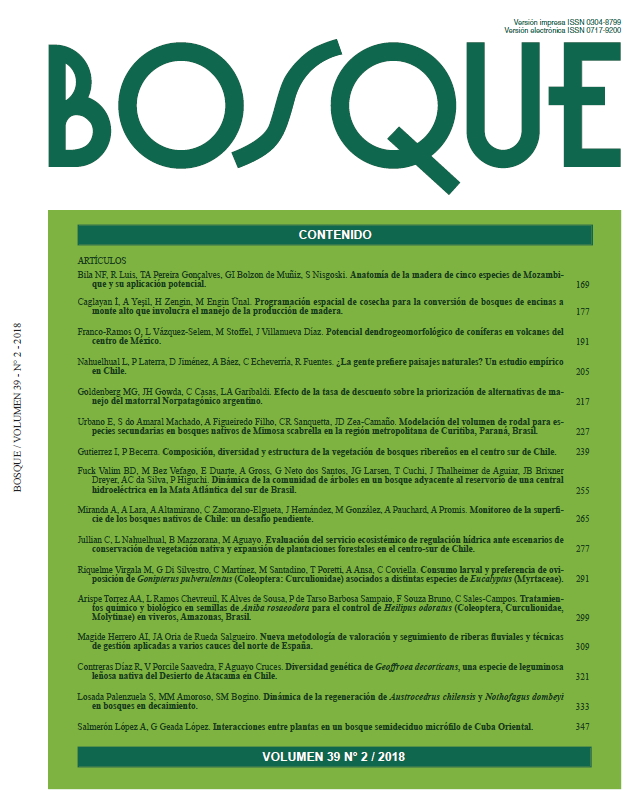Genetic diversity of Geoffroea decorticans, a native woody leguminous species from Atacama Desert in Chile
Conteúdo do artigo principal
Resumo
Geoffroea decorticans (Fabaceae), chañar, is one of the few native tree species that are adapted to the ecologically limiting conditions from Atacama Desert. Despite its considerable value as a crop species, and important medicinal and food properties, the genetic variability of this plant has not yet been evaluated. The aim of this study was to analyze genetic diversity and degree of fragmentation in G. decorticans populations from six provinces in northern Chile. Genetic variability was assessed using eight ISSR and three RAPD primers, generating 97 % and 81 % polymorphic bands, respectively. AMOVA results based on nine populations showed high genetic diversity within populations (65 %) and moderate levels among populations (35 %). Moreover, genetic relationships among individuals provided evidence for the existence of two well defined clusters in the northern and southern regions of the Atacama Desert. A Mantel test showed a significant positive correlation between geographic and genetic distances (r = 0.58) in seven populations, indicating significant isolation-by-distance. Average Shannon Weaver diversity indices showed significantly lower values associated with Pachica, Copiapó river-mouth, Alto del Carmen and Vicuña populations relative to populations from San Pedro, Calama, Azapa and Copiapó. In this work, a combination of ISSR and RAPD methods provided high quality information to evaluate genetic variability, and could be used as an alternative method to identify and distinguish G. decorticans genotypes of interest. This work represents the first attempt to molecular characterization of G. decorticans in Chile, and its significance to future genetic research is discussed.

